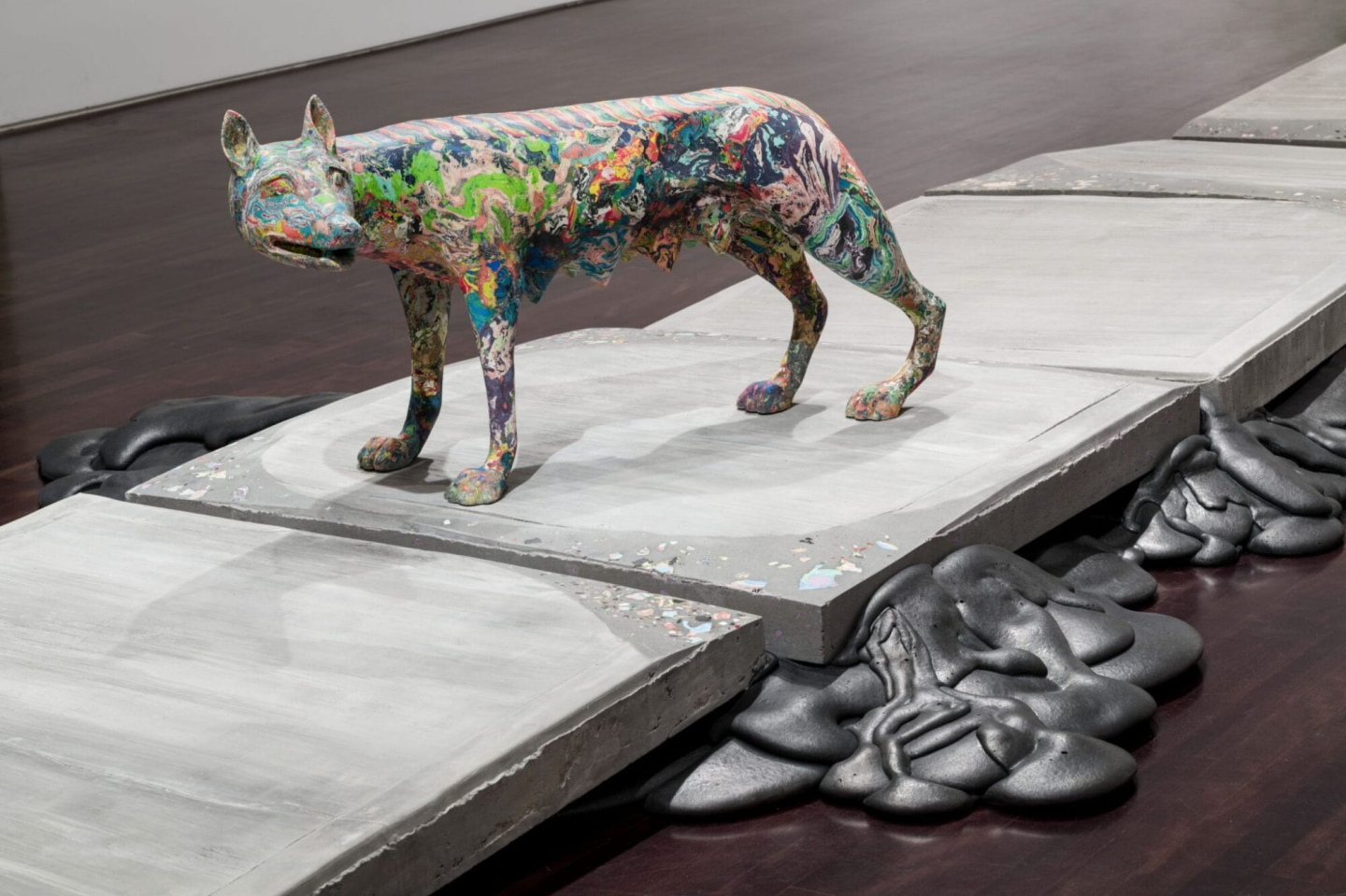Sculptor Lily Cox-Richard presents new work that responds to the history and materiality of the Blanton’s William J. Battle Collection of Plaster Casts, a set of nineteenth-century replicas of ancient Greek and Roman sculptures and one of the few remaining collections of this kind in the United States. Such casts were once an integral part of artistic training throughout the Western world and were believed to embody aesthetic and cultural standards of taste, beauty, democracy, and learnedness. Cox-Richard’s sculptural installation invites us to consider the legacy of these objects, raising questions about their role in perpetuating notions of physical “perfection” and “whiteness” as ideal.
Many Greek and Roman marble sculptures were in fact originally polychromed—brightly painted, gilded, or otherwise embellished—although little of this surface decoration has withstood the passage of time. This creates the false impression that these sculptures, and ancient people, were all white, a misperception compounded by their later casting in white plaster. Using both modern 3D scanning technology and scagliola, an antique method of producing colorful imitation marble, Cox-Richard’s work subverts the myth of classical sculptures’ whiteness and proposes new narratives for these objects.
Press
Art in America, Lily Cox-Richard’s Kaleidoscopic View on the Classical Canon
Artforum, Andy Campbell on Lily Cox-Richard
Austin Monthly, Examining Whiteness at the Blanton’s Latest Exhibit
Austin Woman, Lily Cox-Richard’s Blanton Exhibit is Shifting the Perception of Perfection
Glasstire, The Unbearable Whiteness of Being: A Q&A with Lily Cox-Richard
Hyperallergic, Subverting the Whiteness of Antiquity
Sightlines, Lily Cox-Richard: Re-casting the Blanton’s Battle casts
Credit
The Contemporary Project is organized by Claire Howard, Assistant Curator of Modern and Contemporary Art, Blanton Museum of Art.
Major funding is provided by Suzanne McFayden.

